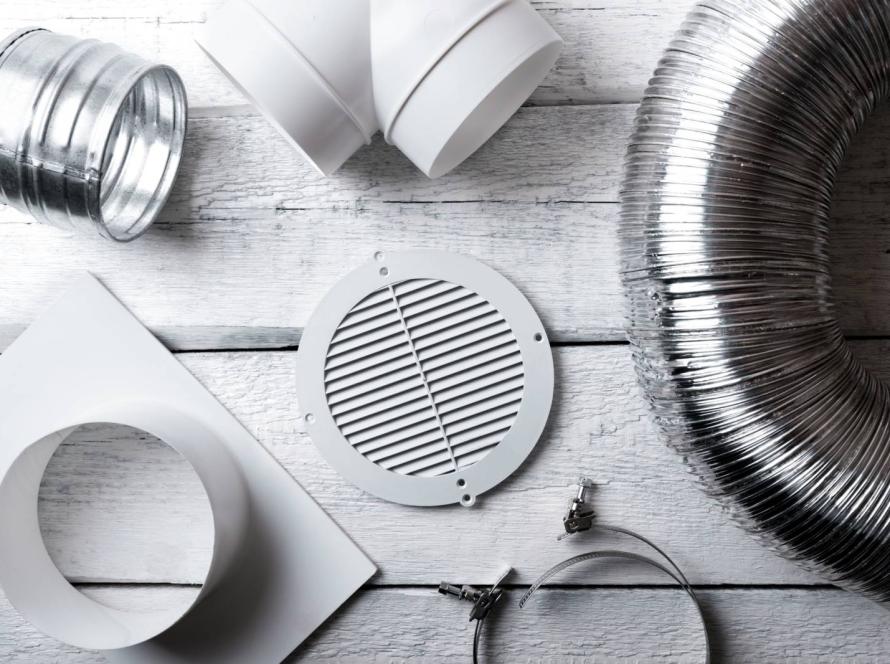If you’re familiar with any type of air conditioning system, it’s probably central air. According to the U.S. Department of Energy, around two-thirds of American households use a central AC or central heat pump as their main AC equipment. These large systems have become a nationwide staple, but that doesn’t mean they’re the only AC option in the game!
Enter the split AC unit. Also called a “mini-split” or “ductless AC,” these humble units may be small, but they pack a powerful punch. Compared with traditional air conditioning systems, they come with a range of features that increase your cooling power, make maintenance a breeze, and even help you save money.
If you’ve never considered these smaller systems, it’s time to learn how they can boost your comfort fast. Here’s what to know about mini-split air conditioners.

Simple Installation Process
Compared with central air conditioners, split AC installation is a breeze.
Because these are ductless systems, you won’t have to worry about having contractors create a network of ducts through your home. This process can be time-consuming, expensive, and invasive, and it’s not always easy to do in older homes.
Instead of using air ducts, split AC units deliver cool air right from your indoor unit. These indoor systems rely on a link to an outdoor compressor to work, however.
To install your split AC, a reliable contractor will need to run refrigerant lines through your home from your outdoor unit. Cooling happens on the way to your indoor unit, allowing your indoor unit to deliver cool air to you before cycling the now-warm refrigerant back to the outdoor unit for cooling again.
Though your contractor will have to create openings for refrigerant lines, the holes are small, often no more than three inches in diameter. These openings won’t affect the structure of your home, so there’s no need for complex construction.
As a side perk of this simpler installation, you can install a mini-split in areas where it would be tricky to get sufficient cooling from central air. Attic guest rooms, finished garages and basements, sunrooms, and even patios can benefit from these tiny cooling powerhouses.
Small Outdoor Unit
If you dislike the look of a bulky outdoor central air unit, mini-splits can help.
Though you’ll still need an outdoor compressor, most mini-split units have slimmer profiles than the ones you’d need for a larger AC. Depending on your needs, you can even find mini-split outdoor components that are half the size of a traditional central AC.
This smaller size makes the outdoor unit of a mini-split easier to hide. Blocking them from view with privacy screens or landscaping is much easier, allowing you to maintain your curb appeal with less effort.
No Windows Required
Many homeowners who consider mini-splits also consider window AC units, another common individual air conditioning type. These small systems make it easy to cool a single room or area, they don’t require additional construction, and they’re easy to install.
However, there’s a clear drawback to window ACs: you need to block a window! For rooms where you don’t have a window, or in areas where you prefer a lot of natural light, this can feel like a huge disadvantage.
Worse, window ACs aren’t always ideal for your home’s security. These units stick out of your home’s window, making them easy to steal, and they also create an opening through which an intruder might enter your home. There are ways to burglar-proof them, especially if you’ve had someone install a security system, but it’s an extra step.
Compare this with mini-splits, which require a series of tiny three-inch-max openings throughout the walls of your home. This is way too small to present a security threat, and it won’t reduce the natural sunlight you get from your windows.
Attractive Design
Split AC units are, by their nature, visible parts of your home design. Though older models were bulky and unattractive, newer AC designs are sleek and modern. They’re also small: the average indoor handler is around a foot deep and high and two and a half feet wide.
You’ll also have different placement options to choose from. You can install indoor units on ceilings, walls, and floors, allowing you to choose out-of-the-way nooks or find ways to help these sleek units blend in with your decor.
Nuanced Comfort
One of the biggest benefits of split AC units is their built-in zoning.
If you choose to install multiple mini-splits around your home, you can operate each independently of the others. In other words, the temperature of one room doesn’t have to match the others.
Compare this with a central AC unit, which delivers cool air at a single consistent temperature throughout your home. While this option can be convenient for some households, it’s not always ideal if certain members feel comfortable at different temperatures. It also wastes a lot of energy if everyone’s in a single room!
The precise control of a mini-split is also ideal when some rooms of your home always feel warmer than others. If you struggle to cool down a sunny, south-facing room but don’t want to blast cold air throughout your home, for example, getting a mini-split is the best solution.
Quiet Operation
Turn on an average central air system, and you’ll hear a near-constant pattern of sounds. From the hum of the motor itself to the whirr of air blowing through the ducts, it’s impossible to miss when a central AC comes on. These sounds aren’t earsplitting, but they can be distracting for some!
If you prefer less AC noise every time you run your unit, a mini-split is a safe bet. Some of the latest models even promise “whisper-quiet” operation, allowing you to maintain a peaceful environment.
Easy Maintenance
As you might expect, maintaining a smaller AC is a little easier than maintaining a larger one.
Split AC maintenance is simplified by the lack of ductwork. With no need to clean or maintain ducts, you can save yourself time and money and remove a chore from your regular household to-do list.
You’ll still need to keep your system clean, check the outdoor unit now and then, and change the filters. Filter changes do need to happen more often than a central air system, but the switch is a quick one. Ignoring this task is a recipe for reduced efficiency, so this is one maintenance chore you won’t want to skip!
You’ll also need tune-ups from an AC professional, as you would with any air conditioner. Plan to schedule an inspection at least once a year.
Enhanced Energy Efficiency
There’s no beating the energy efficiency of a mini-split. The sophisticated tech behind these systems is the most advanced in the industry, allowing mini-splits to consume very little energy.
This low energy cost helps the average mini-split reach high SEER ratings, with some hitting ratings of over 30. Like the miles-per-gallon scale for a car, we want high SEER ratings, as these ratings mean a unit delivers more energy efficiency.
Mini-splits get their high efficiency thanks in part to variable-speed compressors. This technology isn’t new, but it’s not a feature you’ll find in many central ACs. With these compressors, split ACs have multiple speeds that allow the system to run only as much as necessary.
Lower Overall Cost
We won’t lie: mini-splits will cost more than a central air system up front, despite their smaller size. This is especially true with higher-end and more energy-efficient models. The only exception is when you need to install new ductwork for a central AC, which can make the price tags of both systems more equal.
However, where split ACs shine is your long-term savings. Because they’re so energy-efficient, they can lower your cooling costs for years to come. Pair that with more nuanced temperature control that allows you to only deliver air to rooms where it’s needed, and you have the potential for even greater savings.
Advanced Features

The landscape of mini-splits is always pushing forward. That means you can find swaths of upgraded features on the latest models, including some you may not have thought you needed!
Some of the newest mini-splits offer smartphone control, have Wi-Fi compatibility, or pair with systems like Alexa or Google Assistant. They have sensors to detect movement, allowing them to turn on automatically when a room is in use, and they come with a suite of eco-friendly smart features and timers to maximize your energy efficiency.
In other words, if you’re trying to bring your current outdated AC into the present day, consider upgrading to a mini-split!
Improve Your Comfort With a Split AC Unit

Compare Quotes from Top-rated HVAC contractors in your area.
It’s not hard to see why choosing a split AC unit is a smart move. These tiny systems deliver cool air with efficiency and precision, making them great for your comfort and your wallet.
When it’s time to install, don’t forget to choose an expert from Alpha Living’s network of top-rated HVAC pros. Our vetted contractors have a track record of providing superior AC installation and maintenance, and our simple search function helps you gather quotes from multiple contractors in no time! To get started, enter your zip code here.





Facebook
Comments